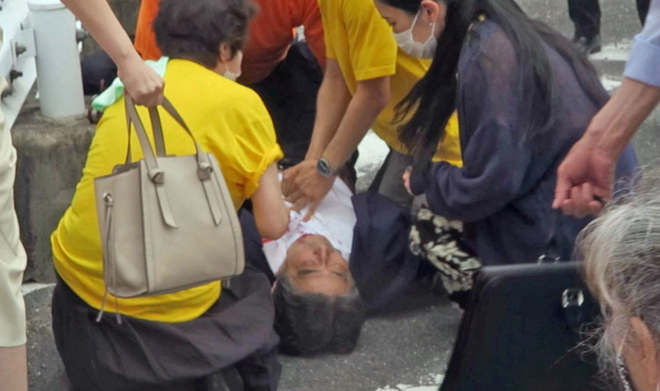The Japanese police admitted this Saturday that there were flaws in the security device deployed in the electoral act the day before where former Japanese Prime Minister Shinzo Abe was assassinated.
There were “undeniable” failures in the security of the former Japanese prime minister, said this Saturday Tomoaki Onizuka, the chief of police of the Nara prefecture (west), where the events occurred, in the middle of the street, assuring that there would be an investigation.
“Given such a serious result, we understand that there were problems with the escort and security arrangements for former Prime Minister Abe,” the police chief told a news conference.
“We will immediately identify the problem and take the appropriate measures,” said the police officer about Abe’s security device, which has been criticized for being insufficient and for allowing the assailant to approach the politician and pull out a gun to shoot him in two. times from behind.
He pointed out that the problem could have been in “the positioning, plan or emergency response, or in the individual capacities of an agent”, factors that will be analyzed together with others.
The regional police chief also stated that they did not have “any indication” that pointed to the possible attack at the scene, in front of a Nara train station.
He also explained that the specific deployment for Abe’s rally was approved by the local police the day before the event, which was when the politician’s attendance was confirmed, and pointed out that it was done based on national security protocols.
Abe was shot while giving a speech before dozens of citizens who surrounded him without any physical barrier or apparent great security display despite being one of the best-known politicians in the country.
The security device in these cases is minimal at first glance and compared to other countries, because Japan has one of the lowest crime rates in the developed world.
The protocols of the Japanese authorities for these cases include the deployment of local police officers and members of the special contingent of the National Security Division of the Tokyo Metropolitan Police Department.
None of the officers present were able to stop Abe’s assailant in time, who approached the politician from behind walking at a slow pace before taking his homemade weapon out of a bag and opening fire on him twice, as can be seen in the images that went viral.
The suspect, a former soldier identified as Tetsuya Yamagami, was immobilized after firing his weapon by agents of the aforementioned special service and later arrested.
Onizuka stressed the “urgent need to clarify the entire case” through the authorities’ investigation into an event that he described as “extremely barbaric and unforgivable.”
Conforms to The Trust Project criteria
















